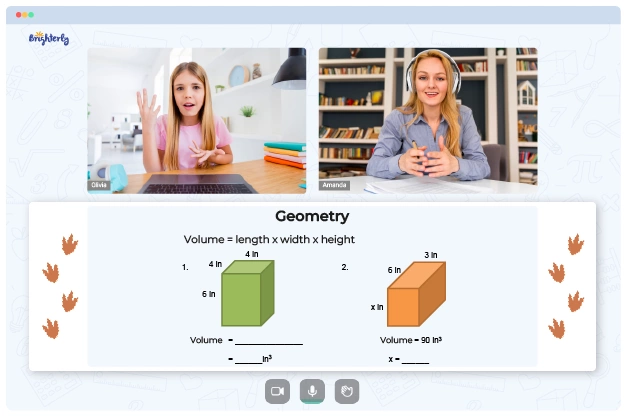Acute Angle – Definition, Types, Examples
Updated on January 5, 2024
Welcome to Brighterly, where we strive to make learning math fun and engaging for children. In this article, we’ll introduce the concept of acute angles. Acute angles play a crucial role in geometry, and they can be found in a wide range of shapes and figures. By understanding acute angles, children will develop a strong foundation in geometry, which will help them tackle more complex problems and appreciate the relevance of math in their daily lives.
What is an Acute Angle?
An acute angle is an angle that measures less than 90 degrees. These angles are found in various shapes and geometric figures, and they play an essential role in understanding and solving math problems. Acute angles are widely used in real-life applications, such as in architecture, design, and engineering. In this article, we will explore the properties and types of acute angles, as well as examples and practice problems to help kids grasp the concept easily.
In order to better master this topic, we recommend paying attention to the math worksheets from Brighterly. They will allow you to master and consolidate your knowledge of the Acute Angle topic.
Definition of An Acute Angle
An acute angle is defined as an angle whose measure lies between 0 and 90 degrees (0° < angle < 90°). This angle is smaller than a right angle, which measures exactly 90 degrees. Acute angles are formed when two lines or rays meet at a point, called the vertex.
Acute Angle Degree
The degree of an angle is a unit of measurement used to describe the size of the angle. One complete revolution (a circle) is equal to 360 degrees. An acute angle measures less than 90 degrees but greater than 0 degrees. For example, an angle of 45 degrees is an acute angle because it lies between 0 and 90 degrees.
Acute Angle Formula
There is no specific formula for finding an acute angle, as it is simply an angle measuring less than 90 degrees. However, if you are given the measures of two angles in a triangle, you can use the angle sum property of triangles to find the third angle. The angle sum property states that the sum of the three angles in a triangle is always equal to 180 degrees. So, if you know two angles, you can subtract their sum from 180 degrees to find the third angle.
Types of Angles
There are four main types of angles:
- Acute Angle: An angle measuring less than 90 degrees.
- Right Angle: An angle measuring exactly 90 degrees.
- Obtuse Angle: An angle measuring more than 90 degrees but less than 180 degrees.
- Straight Angle: An angle measuring exactly 180 degrees.
Acute Angle Triangle
An acute angle triangle (or acute-angled triangle) is a triangle where all three interior angles are acute angles. In other words, all angles in an acute angle triangle measure less than 90 degrees. This type of triangle is the most common, and it has some interesting properties.
Acute Angle Triangle Properties
Some properties of acute angle triangles include:
- The sum of the squares of the lengths of any two sides is greater than the square of the length of the third side (the Triangle Inequality Theorem).
- The largest side is opposite the largest angle, and the smallest side is opposite the smallest angle.
- The circumcenter (the point where the perpendicular bisectors of the sides meet) lies inside the triangle.
- The incenter (the point where the angle bisectors meet) also lies inside the triangle.
Acute Angle Parallelogram
An acute angle parallelogram is a parallelogram where all the angles are acute angles. However, such a parallelogram does not exist because the opposite angles in a parallelogram are always equal, and the sum of adjacent angles must be 180 degrees. If all angles were acute, the sum of adjacent angles would be less than 180 degrees, which contradicts the properties of a parallelogram.
Acute Angle Trapezoid
An acute angle trapezoid is a trapezoid where at least one pair of adjacent angles are acute angles. Trapezoids are quadrilaterals with one pair of parallel sides, and they can have a variety of angle measures. In an acute angle trapezoid, one or both of the non-parallel sides form acute angles with the parallel sides.
Real-Life Examples of Acute Angles
Acute angles can be found in various real-life situations. Here are some examples:
- The angle made by the hands of a clock when the time is between 1:00 and 2:00, or between 5:00 and 6:00.
- The angle formed by the roof of a house when it slopes on two sides.
- The angle between the pages of an open book.
- The angle formed by the blades of a pair of scissors when they are partially closed.
Examples of Acute Angles
Some common examples of acute angles are:
- 30° – The angle formed by the hour and minute hands of a clock at 1:00.
- 45° – The angle formed by the diagonal of a square or a rectangle.
- 60° – The angle in an equilateral triangle, where all sides and angles are equal.
Solved Examples on Acute Angle
Example 1: Find the third angle of a triangle if the other two angles are 40° and 65°.
Solution: Using the angle sum property of triangles, the sum of the three angles is 180°.
Third angle = 180° – (40° + 65°) = 180° – 105° = 75°
The third angle is 75°, which is an acute angle.
Example 2: Determine whether a triangle with angles measuring 35°, 80°, and 65° is an acute angle triangle.
Solution: To check if a triangle is an acute angle triangle, all three angles must be acute angles. In this case:
35° + 80° + 65° = 180°
All three angles are less than 90°, so the triangle is an acute angle triangle.
Practice Problems on Acute Angle
- Find the third angle of a triangle if the other two angles are 50° and 70°.
- Determine whether a triangle with angles measuring 40°, 90°, and 50° is an acute angle triangle.
- Calculate the angle between the hands of a clock when the time is 3:00.
Conclusion
Acute angles are a fundamental aspect of geometry that children encounter in various real-life situations. At Brighterly, we believe that grasping the properties and types of acute angles will not only help children excel in math but also spark their curiosity and fascination for the world around them. By exploring the diverse applications of acute angles, children will develop a deeper understanding of geometry and its connection to everyday life. Our mission at Brighterly is to foster a love for learning and inspire children to embrace the challenges and joys of mathematics with enthusiasm and confidence.
Frequently Asked Questions on Acute Angle
What is the difference between an acute angle and an obtuse angle?
An acute angle measures less than 90 degrees, while an obtuse angle measures more than 90 degrees but less than 180 degrees. In other words, an acute angle is smaller than a right angle, and an obtuse angle is larger than a right angle.
Can a parallelogram have all acute angles?
No, a parallelogram cannot have all acute angles. In a parallelogram, opposite angles are equal, and the sum of adjacent angles must be 180 degrees. If all angles were acute, the sum of adjacent angles would be less than 180 degrees, which contradicts the properties of a parallelogram.
Can a triangle have two right angles?
No, a triangle cannot have two right angles. The sum of the angles in a triangle must always equal 180 degrees. If a triangle had two right angles, the sum of those two angles would already be 180 degrees (90° + 90°), leaving no room for the third angle. Therefore, a triangle cannot have two right angles.
Information Sources
Here are some reliable sources of information for further reading on acute angles and related concepts:






